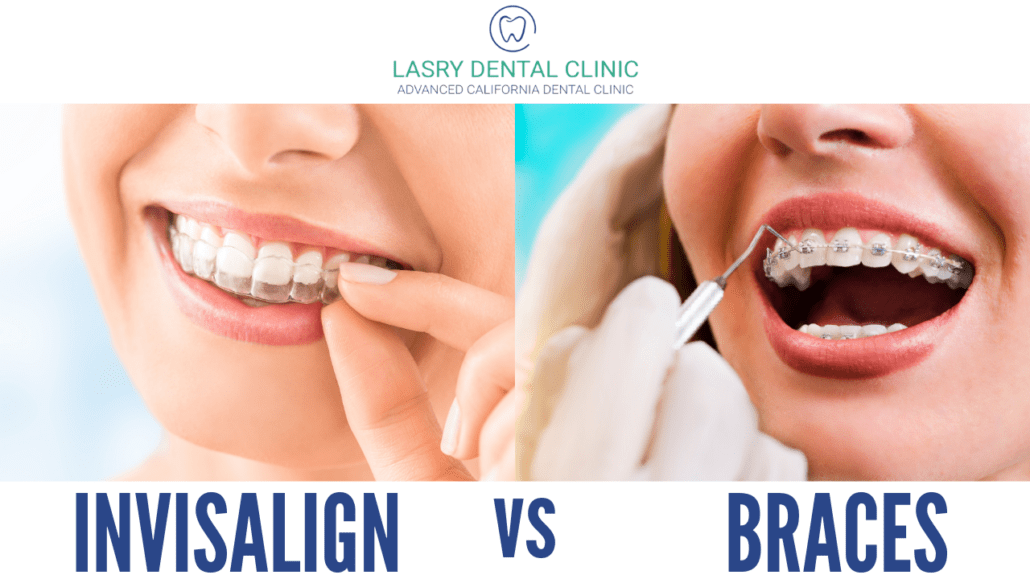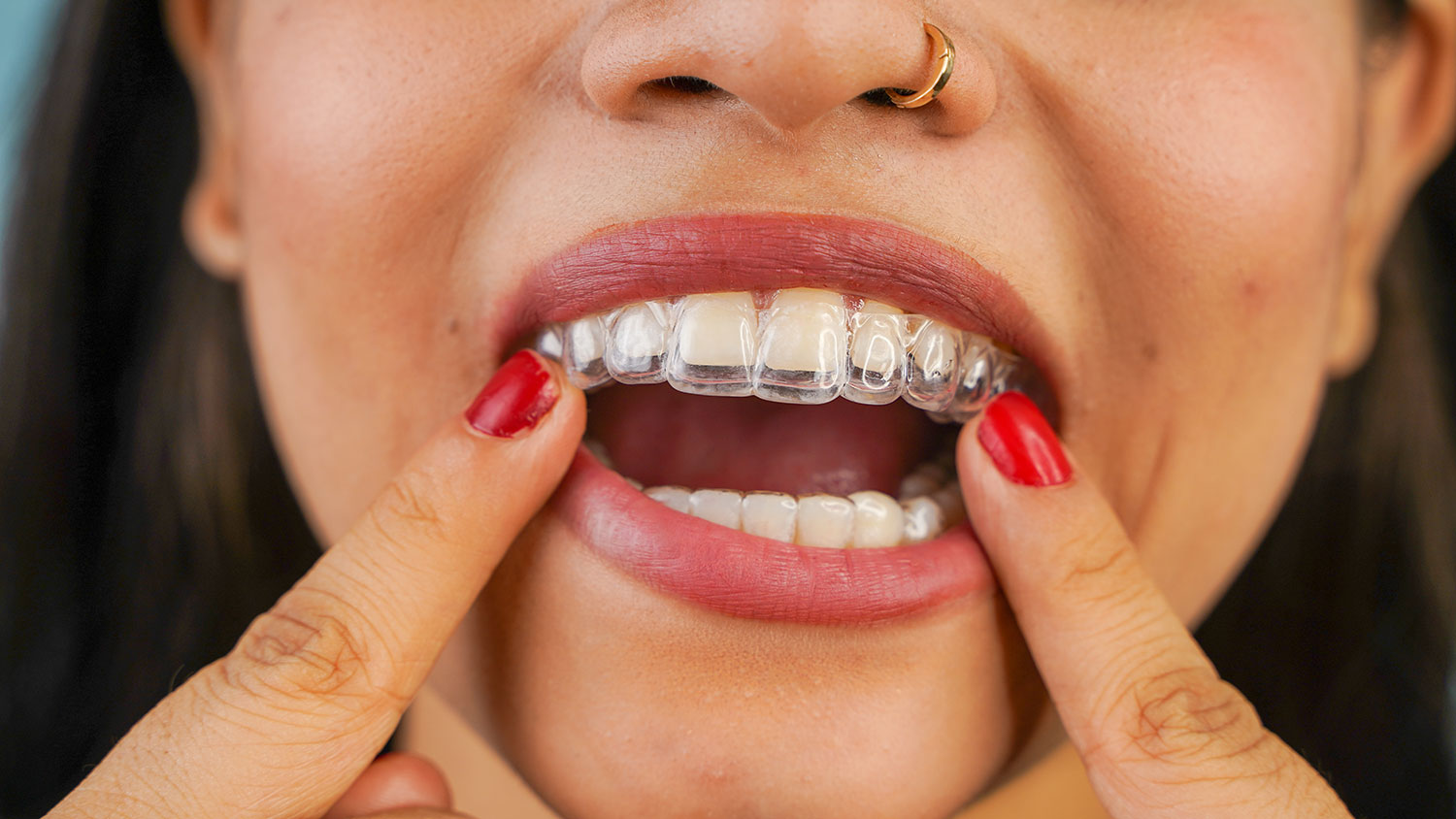What to Anticipate Throughout Your Invisalign Journey: A Comprehensive Review
What to Anticipate Throughout Your Invisalign Journey: A Comprehensive Review
Blog Article
Invisalign vs. Traditional Dental braces: Which Choice Is Right for You?
When considering orthodontic therapy, the option between Invisalign and conventional dental braces provides several crucial factors that warrant cautious assessment. Invisalign provides a very discreet option with detachable aligners, while standard dental braces supply an extra noticeable yet reliable remedy for extreme imbalance.
Summary of Therapy Choices

In comparison, traditional braces contain metal brackets and cables that are bound to the teeth. This approach applies continuous stress gradually to accomplish alignment. While reliable for complex orthodontic problems, conventional dental braces call for regular check outs for modifications and can pose difficulties in keeping dental health as a result of the difficulty of cleansing about brackets and cords.
Both choices have their merits, and the choice usually depends upon specific oral problems, lifestyle preferences, and patient compliance. Eventually, speaking with an orthodontic expert is critical for establishing one of the most ideal treatment strategy tailored to individual needs. Comprehending the nuances of each option can significantly influence the overall success of orthodontic treatment.
Aesthetic Factors To Consider
A substantial factor affecting the selection in between Invisalign and standard braces is the aesthetic charm each therapy offers. Invisalign aligners are crafted from clear plastic, making them virtually unnoticeable when used.
On the other hand, standard dental braces contain steel braces and cords, which can be a lot more noticeable. While improvements in orthodontic modern technology have actually led to the development of smaller brackets and colored elastics, typical braces still preserve a more conspicuous profile. For some individuals, the exposure of braces might discourage them from looking for necessary treatment.
Eventually, the option between Invisalign and typical dental braces might depend upon individual preferences concerning aesthetic appeals. Clients that prioritize discernment frequently favor Invisalign, while those that are less worried concerning presence might opt for traditional dental braces. Understanding the aesthetic implications of each alternative is important for making a notified choice that aligns with one's way of life and preferences.
Convenience and Convenience

In regards to benefit, Invisalign aligners are detachable, allowing individuals to appreciate their favorite foods without constraint and keep optimal oral hygiene. Cleaning and flossing are streamlined, as the aligners can be taken out throughout these regimens, whereas typical dental braces need careful steering around cords and braces.
In contrast, standard braces require normal adjustments, making them much less convenient for those with hectic timetables. Overall, the convenience and ease of Invisalign make it an attractive selection for many individuals looking for orthodontic therapy.
Treatment Duration and Performance
While both this article Invisalign and conventional braces are reliable in correcting dental imbalances, the period of therapy can vary substantially in between the two options. Commonly, Invisalign treatment can take anywhere from 12 to 18 months, depending on the complexity of the situation. The clear aligners function by progressively shifting teeth into their preferred settings, and normal follow-ups with an orthodontist aid ensure development stays on the right track.
In comparison, typical braces frequently need a longer dedication, normally varying from 18 months to 3 years. This is due to their fixed nature and making use of wires and brackets, which can be much more efficient for complicated situations and serious misalignments (Invisalign). The treatment effectiveness of conventional braces is well-documented, as they permit accurate adjustments and greater control over tooth activity
Inevitably, the selection in between Invisalign and conventional dental braces may depend upon both the anticipated therapy period and the certain dental issues at hand. Consulting with their explanation an orthodontist is crucial, as they can provide customized suggestions based on individual demands, ensuring the picked technique aligns with desired end results and durations.
Expense Comparison and Insurance Alternatives
Expense plays a significant duty in the decision-making process for individuals taking click over here now into consideration orthodontic treatment, whether choosing Invisalign or typical braces. On average, the expense of Invisalign ranges from $3,000 to $8,000, while typical braces typically set you back between $2,000 and $6,000. Variables influencing these prices include the intricacy of the situation, the period of treatment, and geographical area.
Insurance policy coverage can substantially impact out-of-pocket expenditures. Numerous oral insurance strategies provide partial protection for orthodontic treatments, however the specifics can differ commonly. It is critical for clients to assess their insurance coverage plans to determine the degree of coverage for either choice. Usually, traditional braces might be more often covered by insurance policy plans compared to Invisalign, which some insurers categorize as an aesthetic treatment.
In addition, several orthodontic practices provide versatile layaway plan, making both therapy alternatives extra accessible. Clients ought to ask about prospective funding choices and discount rates for in advance repayments. Examining the overall expense, consisting of insurance coverage benefits and repayment plans, is vital for making a notified choice that straightens with both visual preferences and budget plan considerations.

Conclusion
In summary, the selection in between Invisalign and typical dental braces pivots on several elements, including aesthetic choices, convenience, therapy duration, and cost. Invisalign offers a very discreet, detachable choice that assists in oral hygiene and nutritional versatility, while standard braces might be preferable for complicated dental concerns and commonly come at a lower rate factor. Ultimately, consultation with an orthodontist is necessary to analyze specific conditions and figure out the most ideal therapy option for attaining ideal dental placement.
When thinking about orthodontic treatment, the option between Invisalign and typical braces offers a number of important variables that merit mindful assessment.Contrasting Invisalign and standard braces exposes distinct therapy options for orthodontic modification.While both Invisalign and traditional dental braces are effective in remedying oral misalignments, the period of treatment can differ significantly between the 2 options.Price plays a significant function in the decision-making procedure for individuals thinking about orthodontic therapy, whether choosing for Invisalign or typical braces.In summary, the selection in between Invisalign and conventional dental braces pivots on multiple aspects, consisting of aesthetic preferences, convenience, therapy duration, and expense.
Report this page